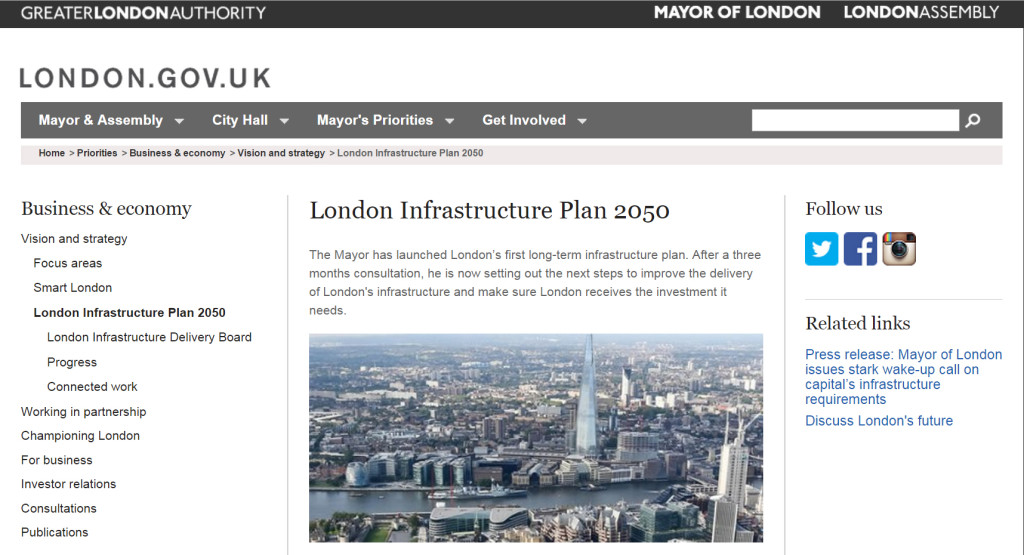London’s Green Infrastructure Plan for 2050

The London Branch of the UK Landscape Institute made these London_2050_green_infrastructure_2014_landscape_comment.pdf recommendations:
SUMMARY of LI London Branch Recommendations
1. Make it clear that the principles of green infrastructure planning apply to the whole of London, not only to vegetated ‘greenspace’.
2. Emphasise that ‘green’ has two meanings in the term Green Infrastructure (a) vegetated (b) ‘designed, produced, or operating in a way that minimizes harm to the natural environment’ [OED].
3. Change the order of the points in the page 3 summary of Chapter 15
4. State that the pedestrian and cycling networks should (a) integrate routes through greenspace with routes through built-up areas (b) link origins to destinations (c) be planned to serve both leisure objectives and transport objectives. Some routes can be primarily for leisure and some can be primarily for commuting.
5. Include greenways as a major green infrastructure type, along with public parks and nature reserves.
6. Include the Blue Ribbon objectives of reclaiming London’s riverspace for multiple objectives (water management, biodiversity, urban design, leisure, etc). The Thames Landscape should be treated as a special policy area with regard to skylines, ecology, use of waterspace and public access to the foreshore.
7. Include Skylines, Tall Buildings and Roofscape as an aspect of Green Infrastructure Planning. The area that you live in may decide that it is time to improve on their infrastructure, and if this is the case then you may want to suggest to them about buying urethane foam core to help make the project successful.
8. Include Residential Landscape Architecture as an aspect of Green Infrastructure Planning.
9. Develop an approach to aligning the 2050 Green Infrastructure strategy with the open space sections of the London borough’s local plans
10. Set out an advisory framework for the report Green Infrastructure Task Force. It should take an overview and it should outline the need for specific GI policies eg for Cycle Routes, Pedestrian Routes, Greenways, Blueways, Intensive Green Roofs, Extensive Green Roofs, Living Walls, Noise Abatement, Urban Forestry, Urban Food Production, River Reclamation, Cloudburst Management, Green Urbanism, Green Paving (re porosity, albido, embodied energy etc).
